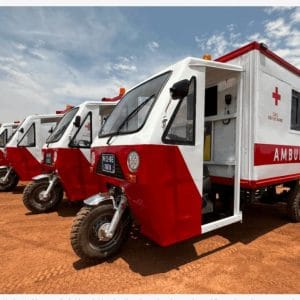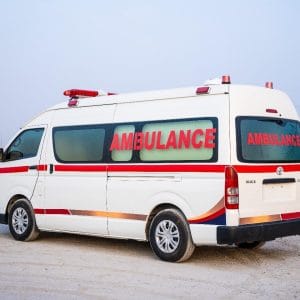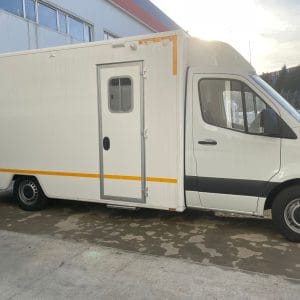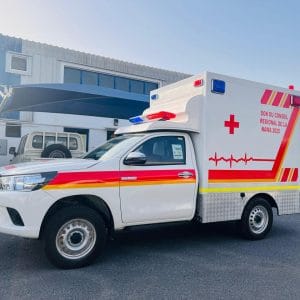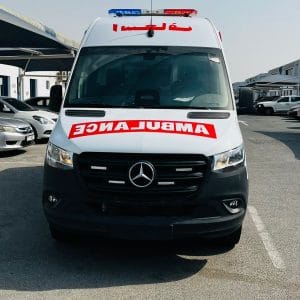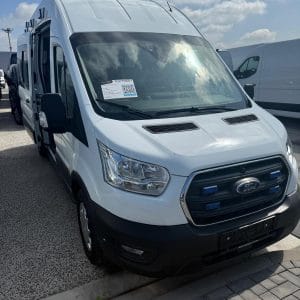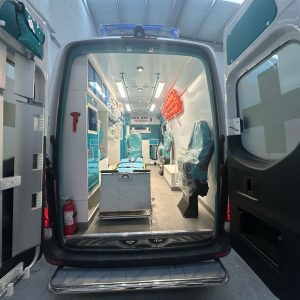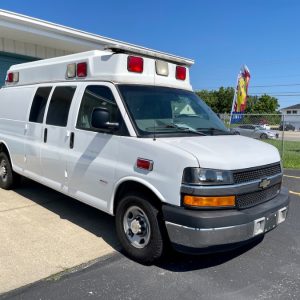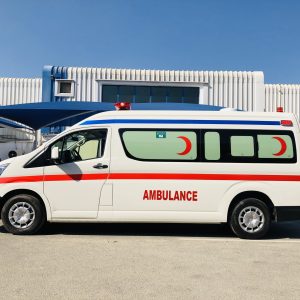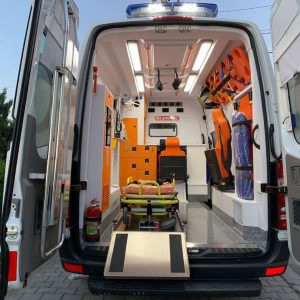1. Introduction to Ambulance Boxes
Ambulance Box Manufacturing is a patient transport box that acts as a small mobile ward for carrying a patient by oneself in an ambulance to the hospital or place of treatment. The box may be a fully equipped ambulance box or a limited specialized model. Depending on the manufacturer, they can be built with different features. These can be for carrying people or animals. They can be fitted to a van, pick-up, or chassis cab or as a trailer and are often manufactured using a lightweight construction system.
Ambulance Boxes are a great way to rapidly and effectively provide Emergency Medical Service (EMS) services to those in need, particularly in regions that lack appropriate infrastructure. The vast amount of weight they are able to carry is one of their most interesting and helpful aspects. These cars are indispensable under incredibly challenging road conditions in providing medical service. The mobile intensive care system works perfectly. Ambulance Boxes are used to offer emergency medical treatment to a patient and then shift to a specialized care center. The ambulance boxes in different dimensions are accessible. In some sort of ambulances, power steering systems and air conditioning systems may be installed. In addition to rack location, optional stretcher mounting and patient bunk mountings are also available. In addition, the ambulance boxes comprise personal care services.
1.1. Purpose and Importance
Ambulance Box (AB) is a form of customized cabin for the organization of emergency aid to a patient in a medical vehicle or at the place of their stay. It is an important part of the emergency medical service system. The production and design of ABs, according to the features of emergency medical services for different groups of the population and in different cases, as well as according to the circumstances of natural conditions, is of great interest. It is an essential part of pre-hospital aid that is rendered directly to injured or sick people, which predetermines their life-saving.
Emergency medical care is rendered by specially equipped and designated motor vehicles such as ambulances and 20 three-wheeled motor-driven vehicles. There are currently more than 20,000 road ambulances in operation. The patient-care sections of these vehicles are approximately evenly divided between full-sized passenger motor vehicles and four-wheel drive trucks. All of these vehicles are air-cooled and have a therapeutic capacity of twelve (12) patients. To provide for additional persons that might be present in case of natural or technological accidents, 2-5 seats for accompanying caretakers are often set.
Motor-driven technicians provide a valuable service to the people who use them. Sixty thousand patients a year in 1953 is a convincing demonstration of this point. These attendants seldom have a trained nurse with them. One of the common tasks of the attendants, solely, is the administration of first aid. First aid is therapy that is administered relatively infrequently in the shade of serious and critical traumas and/or illness. In spite of this fact, it is recognized that first aid treatment is of the utmost importance if there is to be any chance of casualty survival. In the case of surviving patients, the earliest application of first aid becomes the primary modality. The major elements in the therapeutic regimens in mass-tragedies become ubiquitous in being transportable and administered on entry to a travel mode.
1.2. Types and Variations
Ambulance Box Types and Variations
SteelDRIVE and POLY-LIFT offer a broad range of different boxes in different dimensions. They are made in different lengths and designed for installation on a long commercial van body or a van chassis or cab-chassis (Pick-Up style). The choice of vehicle will depend on the type of environment the ambulance is to be operated in, the application, and patient loads required to be transported. The boxes can be designed and built for various applications such as patient transport, intensive care, or rescue. The choice of internal fittings will depend on the country of operation and type of paramedic crew working in the ambulance.
Size The ambulance box needs to be adapted to the size of the vehicles, and it can range from a smaller patient module capable of accommodating one patient and attendant to a larger module capable of handling two patients and attendants. In many developing countries, the emergency services carry the larger portion of the population in police-type pick-up vehicles. It is necessary to take into account demand and funding from developing countries where budgetary limitations and space considerations are important factors, and discretionary income tends to be very low. It needs to be practical to mount the box onto a vehicle and not have too much overhang at the back. The type of patient to be transported and the technology is also of importance depending on the injured person’s status. The use of the ambulance also varies in urban, rural, industrial, and commercial regions and closed and crowded areas, which should be taken into account.
2. Materials Used in Ambulance Box Manufacturing
In the manufacturing of ambulance boxes, which are specially designed for their own vehicle, a process-dependent structure has been made, and the most economic structure has been achieved in terms of material and labor. Due to frequent and heavy use, such as inside and outside temperature differences, shock, and so on, adequate strength and durability should be carried out on its own vehicle. For this purpose, the outer body and the inner body are covered with HRP (hot rolled plate) or galvanized (as required) shock-resisting plate hammers of 1-3 mm as wood structure. This type of metal sheet is both shock-resistant due to its structure and is also not subject to heating and melting at the required temperature for difficult places. Again, air, water, and hot insulation are provided in some different structures according to the required inside, frame, sandwich, and sprayed skin in general. For this insulation, PX or polystyrene HPS (ortopen) and so on. Materials with insulating properties are used, which do not lose their properties in the presence of water.
To know it is to find an effective solution, as the situation is aimed at insulated inner coatings, both the material used and the mounting type should not cause air or water to form in a way that will politicize and create microorganisms. 1-2-3 and more suitable ways to be evaluated, the two outer metal plates in different ways to be evaluated and based on these technical specifications, it is subjected to vacuum under heat and pressure technically in environments where the two outer plates are more precisely formed and of course, it must have the desired width to be evaluated more stigmatized. 3-4-5 mm according to the type of material to be used as shock as a first quality standard. In sandwich (sandwich) surfaces; fibercement, aluminum, galvanized sheet, stainless yellow, aluminum exterior walls, color paul (rain, UV and washing-resistant, rust-resistant, especially for anthropomorphic factor when it comes to looking for a bright aspect in view), cover pazvaniz preferably pre-film, and aluminum chipboard, plywood. These surface plating should be chosen according to the desired type of surface according to the vehicle. Also, insulating materials used as plate filling are the following in the most comprehensive manner with a selection according to the functions of the machines. To explain briefly; Low at low insulation or low-temperature products; FRP painted sheets, stainless exterior or eloks sed aluminum, interior mineral wool, fibrous elastic polyurethane foam, exitst 15mm fiber cement.
2.1. Metal Sheets
Ambulance boxes are outfitted on adequate bases within the vehicle according to the function of use, for which all outside profile of the boxes is properly blended with the part of the ambulance without using binder materials in the manufacturing process. The structure of the ambulance boxes manufactured by use of pan shaping by hydraulic presses and included forms in drawing machines is composed of the material obtained by welding two groups of belt having 390 N/mm2 tensile strength. In uncoverable parts, the property for draught given by zinc, which takes the role of binder, is reserved and reportedly, stainless steel sheet is used and the welding technology, Weklip, is performed. Particularly used in the shapes of the ambulance boxes, zinc made the following forms possible: Various profiles such as Phosphorous and the back are to be attached to the edge. In order to be suitable for curved forms, it inhibits the formation of corneliness. The structure of box with free standing surfaces prevents the accumulation of dirt.
Metal sheet is the main material in an ambulance box manufacturing. An important number of ambulance box manufacturers prefer to use stainless steel metal sheet. Although much more expensive than the metal and generally preferred usage, the manufacturers have many reasons to prefer stainless steel boxes. The manufacturers make this decision because of some key properties of stainless steel like high tensile strength. These properties are: fire resistance, lower thermal expansion (relative to mild steel), lightness, and corrosion resistance. The important thing that is worth being mentioned to the readers is the fact that stainless steel is less affected than the mild steel by corrosion. Although “corrosion proof” is an unlikely description for such a material, in comparison to the mild one, stainless steel is less affected by heat and this characteristic is important for the resistance of the material in quality changes. These features are considered as positive reasons requiring the usage of stainless steel. Forms are made using different material to accomplish this range. For the free standing surfaces, stainless steel AISI 304 (DIN 1.4301) is used which offers the property for draping given by zinc. Both sheet types have a tensile strength of 390 N/mm2. A stretcher can be lifted up to a load of 200 kg. With this type of load, the part should not deform. In order to provide additional AoH benefits, the height for easy use should be less than approximately 700 mm. The box will be placed under the ambulance stretcher, this is the maximum height for making it easy to place the stretcher in the box. Stretcher area height should be the same as or more than the ambulance box, so possible faucets in nozzle area, which will have an upper threshold, will not damage the stretcher while opening. All those mentioned criteria were taken into account to calculate the distance between the box top surface and nozzle cover.
2.2. Insulation Materials
Insulation materials are the most important factor of a box body because they prevent or reduce heat and/or cold transmission from one medium to the other. They keep the permissible temperature range constant and thus help existing refrigeration devices to maintain the optimal storage conditions inside the vehicle. Insulating materials are made of expanded polystyrene (EPS), extruded polystyrene (XPS), polyurethane (PU), and also with different complementary inert gases inside their structure to enhance thermal conductivity. EPS, XPS, and PU have various thermal conductivities. EPS density varies between a minimum of 15 kg/m3 and a maximum of 60 kg/m3. XPS density varies between a minimum of 30 kg/m3 and a maximum of 35 kg/m3. PU & PIR density values range from a minimum of 35 kg/m3 to a maximum of 42 kg/m3 for solid foams. Density values more than 42 kg/m3 are used for the so-called micro-cellular foams (also known as minicellular foams).
The thermal conductivities of EPS, XPS, and PU material types are 0.032 W/m·k, 0.038 W/m·k, and 0.032 W/m·k, respectively. Heat always spreads from warm to cold, but different physical, mechanical, or chemical methods can be utilized to stop that process, or at least slow it down. Heat initially and mainly spreads through vibrations and movements of atoms and/or crystalline structures within the material, and naturally, the type of material used or its structure will directly affect the speed of heat transfer. Insulation materials take advantage of these properties to keep the interior conditions of a structure constant.
3. Design and Engineering Considerations
This article documents the manufacturing process of ambulance boxes. An ambulance box is usually made for a standard heavy commercial truck known as the Ambulance Body. The ambulance box consists of two major components: a storage space or medical compartment and a driver operator compartment. It is designed and engineered considering the comfort of the patient and provides sufficient space for medical equipment for medical assistance. The ambulance box will transmit the support of the ambulance interior, such as the functional arrangement of electrical lighting, storage compartments, and other interiors. Care must also be taken for the box to provide a flat floor, and the vehicle generates a 3˚ front elevation to avoid any fluid clogging inside the box. Once the fabrication and assembly process is completed, the ambulance box on tires will receive the industry’s paint and undergo the requested quality inspection.
Considerations in steel fabrication and engineering are the structural integrity of the material, the welding process, and the quality provision for the translation of force. The ambulance box plays an important task by transporting patients swiftly. There are two types of loads during the task: the loads from the road (bumpy and sharp breaks) and the loads from the construction of the box itself. These loads are able to jeopardize the safety of the patients and medical workers and cause some sensitive equipment to function improperly. The foremost thing for an ambulance box is to ensure the patients’ and medical workers’ security and well-being. Therefore, a design that offers robust and durable ambulance boxes is principally needed. This design and standard procedures are supposed to give rise to a reduction of cost in the lifecycle during the longer lifespan of ambulance boxes.
3.1. Structural Integrity
One area of a specialist vehicle which is often overlooked is the ‘box’. Bus bodies and van modules must meet crash safety standards, yet boxes are often exempt from these same regulations. This is because the box is considered an interchangeable part of a vehicle, rather than a critical part of the crash management system. Special care has to be taken when designing and constructing bodies, both to maintain cabin area integrity and for the stability of the vehicle. Structural steps which have been taken to better design crash-stable bodies in ambulance applications usually include the use of a monocoque design composed of load-bearing high-strength materials such as aluminum or advanced high-strength steels, in joint construction with other material types, as well as procedures to limit deformation in the box design.
However, lightweight materials, such as aluminum, Fairlite, or ABS, which have a significant degree of elasticity, require a great deal of care and robust design at the connections. All of the designs and techniques highlighted call for a robust and long-lasting connection to make the most out of the material’s benefits. Connections should be strong so that they do not weaken the materials to sub-critical strength levels or allow excessive movement of the sections to cause damage to electrical elements, fittings, or medical equipment. Materials and construction methods are essential parts of any system used to improve structural integrity, but the design and the way the system is used are just as important. Achieving the critical balance that makes the entire vehicle benefit from a tougher, more consistent, and resilient bespoke body is the main goal.
3.2. Accessibility Features
To enable the stretcher to be brought into the B-ambulance, a side door with a width of 750 mm on the right of the PTU should be designed. On the back of the B-ambulance, a manual ramp for the PTU to be wheeled inside the ambulance can be designed. Level differences should be avoided since they make it difficult for an attendant inside the ambulance to pull the PTU inside due to the weight of the complete PTU. The ramp should be positioned so that it is in line with a straight path from the PTU to the stretcher. Inside the ambulance, a twin door design, which opens towards the outer walls and has a width of 1700 mm, to allow 2 attendants to push the stretcher inside simultaneously without waiting for each other, can be designed between the loading space and the labour space. Concerning the hinges of the double doors, pin hinges are used, with strap hinges placed in a 180-degree mirror image. When the hinge is closed, it forms a continuation for the minimal loading height at the hinge position. The double doors are positioned on both the front and rear of the B-ambulance to ensure complete accessibility.
In B-ambulances, 1 pt of the PTUs should be positioned long along the length of the B-ambulance for better stability. On top of the PTU, there should be a long working table, bracket drawers, and one wall-mounted oxygen bottle holder sized 495 mm × 220 mm × 200 mm. The interior of the B-ambulance should be laid out symmetrically to reduce the impact of road curves and hence minimize shearing force. PTUs are configured with a raised working table at the front and diamond-plated rims with edging on the sides and rear. The raised working table facilitates the PTU attendants to work efficiently, as the height of the table is compatible with the height of the human body in a seated position, as stated in BS EN 5336:2020 Ambulances—drawings for rescue/assistive devices—functional requirements.
4. Manufacturing Techniques Ambulance Box Manufacturing
This chapter deals with the manufacturing techniques of the sheet metal parts employed in the construction of ambulance boxes. The main steps in the design and development of any product involve selection of material, shape, and processes according to the requirements of the designer. Sheet metal, being the skin of any automobile, is the quite commonly used engineering material. Sheet metals are employed in ambulance boxes to give not only the structural strength to the box but it is also used for giving aesthetic appearance. Hence, in any vehicle development activity, the manufacturing aspects of sheet metal parts from the point of view of material selection, production of parts, and the assembly process are essential parts of the overall design activity. Any vehicle apart from its essential form and functionality should offer a pleasing appearance, ease of maintenance and also low cost of acquisition.
Sheet metal is characterized by its geometry and mechanical properties. The former include shape and size, while the latter are yield strength, ultimate tensile strength, elastic modulus, and the Poisson’s ratio. Thus, the properties determine the quality of a sheet metal component. In the manufacturing process, most structural components are created by cutting, bending, blanking or shearing and then assembling these formed sheet metal parts by various joining techniques, such as welding and riveting. Modern manufacturing processes have managed to combine all these processes into a single die. Casting and forging also fall under the category of heavy material removal processes, however these are not commonly used in the automotive industry nowadays.
4.1. Sheet Metal Cutting and Bending
Function Jig & Fixture: This arrangement holds the workpiece (metal) securely and positions it properly for manufacturing. Considering sheet metal, it is a combination of two or more processes that are used. Sheet Metal Cutting and Bending are two basic processes used to form designed objects. In various fields, especially in the medical sector, the ambulance is required rapidly. The customization of the ambulance required is also a high proportion as the process parameters are health issues of human beings. The varying conditions are a frequent change of the type. Fiber body & Lighting Ambulance box is changed as per the customized ambulance. Question: What are the names of the manufacturing operations performed in the manufacture of the ambulance box?
To reduce the volume of the ambulance vehicle, hollow sections are designed in 3 sub-systems. The ambulance box consists of three important parts: safety tubes, furlough windows & panels. The steel material of CR4 grade is used in all ambulance parts. CR4 means building grading steel material of E=202 Gpa. The sheet thickness is taken as 1mm. The jigs and fixtures required for the manufacture of the ambulance box are listed as follows. The ambulance box is made up of sheet metal with tools. The tools used are Cutting tool & Bending tool. Figure 3.1 shows the tools used for the manufacture of the ambulance box. These tools are more accurate, consistent, repeatable, and flexible. The manual work is reduced and greater production of the ambulance box is manufactured. The cutting operation is performed with the help of the Sheet Metal Cutter. It is a mechanical machine that uses a punch which is used to remove the metal in the sheet and stamping dies to mold the sheet. The bending operation is performed with the help of the Sheet Metal Bending Machine. It is a mechanical machine that uses a punch and dies. Bending machines will form metal and plastic parts. The process is performed by bending when with the help of bending punch and die at the required angle is bent. The bending punch and die are classified as wipe bending.
4.2. Welding and Joining Techniques
Fabrication is the crucial process to be used to join various parts for the assembly of the ambulance boxes to form the integral structure. To achieve optimal performance, an efficient joining technique should be used so that there are no discontinuities that can be caused by joining, and these discontinuities are the most common causes of structure integrity failures. Therefore, when joining the parts together, one must ensure that the joining techniques will be able to provide the strength and integrity so that we can ascertain its structural sustainability.
There are several techniques used in the joining process to fabricate these ambulance boxes such as welding and fastening methods. Some of the welding techniques that can be used are Shielded Metal Arc Welding (SMAW, or commonly known as manually arc welding), Metal Inert Gas welding (MIG), and Gas Tungsten Arc Welding (TIG). Selection of welding procedure to fabricate the ambulance boxes includes joining ferrous and non-ferrous materials that typically are used in fabricating and assembly process. Multipass, joint type, groove type, filler metal, filler wire diameter and the welding current are to be considered in order to get the desired quality as a replacement to the product specification. Objective of the joining process is to obtain good interlock between the structural component materials so that it will last longer and meet the environmental effects during its service throughout ambulance usage.
5. Quality Control and Testing Ambulance Box Manufacturing
Quality control is a fundamental part of the manufacturing process. Steps should be taken to ensure that new components of the box are up to standard with related Australian standards and medical regulations. The ability of existing components to be used in a new configuration allows for fewer variables during the in-service phase of the new ambulance. This quality control will ensure that there will be an appropriate standard of design that is reliable to serve during real-world medical emergencies. All components of the ambulance box shall be subject to rigorous product testing procedures. Any products or tests that do not meet current Australian standards for use in an ambulance in Australia will not be used in the build. No work around components can be determined acceptable without the appropriate tests to prove the system.
Products shall need to be tested as fitted into an ambulance box. No test results from a component in an ambulance being completed as a “module” or “metal and wood units” will not be suitable. The direction of failure for each test is to be assessed based on the likelihood of failure. A great emphasis will be placed on human or equipment safety and whether a structural integrity test will fail in such a way that the structural strength of the box is compromised. The box in these detailed design specifications will be made of adherence to the requirements of vehicle ambulance fit-outs for both fronts and rear components of the structure. They can be tested for compliance with clause (3). Compliance with the testing requirements shall be certified by the test facility, and a copy of the signed test certification will be supplied to the service provider along with all required detail.
5.1. Durability Testing
The durability testing of the most important components of all similar motor bodyworks, including emergency funerals and hearses, is carried out with test equipment and procedures established by our own personnel. It was revealed that this kind of testing was one of the most realistic ways to determine if the manufacturers’ products meet the customer requirements. Six main types of testing were conducted. Among these, there was the climatic test to evaluate long-term resistance to weather-exposed environments, as well as the road endurance test which included intensive loads close to the maximal payload combined with continuous driving. In the case of the rail shock test, the stress levels to be used have to be determined yet. This test, specially recommended by the European Community, may be included among the above-mentioned six tests, but not until its stress values will be known.
Owing to the bigger amount of involved data and time of testing, the structure of the standard fatigue tests of commercial vehicle bodies results extended and worthy to be presented in several separate papers. The main practice and scope in testing heavy commercial vehicles is filmed in a picture of a durabilimeter measuring machine. The vehicle’s volume to sustain accelerated miles is placed over the quality of components, and the overall performance of that vehicle hauls a piece of its national economy. The components to sustain the load and the environmental aggressions they are exposed to are tested in places known as fatigue laboratories.
To determine the aggressivity to which our trailers would be exposed on a non-deteriorating surface while still new, working components of the box and chassis exert the range demonstrated by Michigan Engineers. 811 iterations of Bottero and Mishra equations during 04 hours.
5.2. Safety Standards Compliance Ambulance Box Manufacturing
Every phase of manufacturing insurance required by EU legislation has been discussed and obtained in this article. Certainly, there are safety standards and regulations to set out the profile of the ambulances. Since the ambulance is used to transport patients, it must be designed following the legal and technical regulations, taking patience and emergency staff safety as a priority. Boxes with these features are usually loaded on standard chassis cabs (e.g. box with external dimensions of 328 cm transversally and 720 cm longitudinally).
You must take the following actions to satisfy the norms described above: i) All of the boxes are manufactured to have internal finishes of a better quality than these values. ii) Altro Interior PVC cladding and insulation system on each box. iii) Parcel of easy-to-clean coverings are put on the non-insulating walls at each contact point. iv) The ventilation grille in the patient compartment has a device to suit the possibilities of mechanical ventilation. The ambulance box built has a more massive super-support structure in the longitudinal and transversal directions than the permitted load-bearing capacity because the weight of the chassis was not as much as the new chassis. For that, the ambulances made a structural transport box with longitudinal battings and transverse separators like rail configurations and swing jacks. Complete telescopic belts, which can be fixed in different sections, are put into each cubicle classification.



